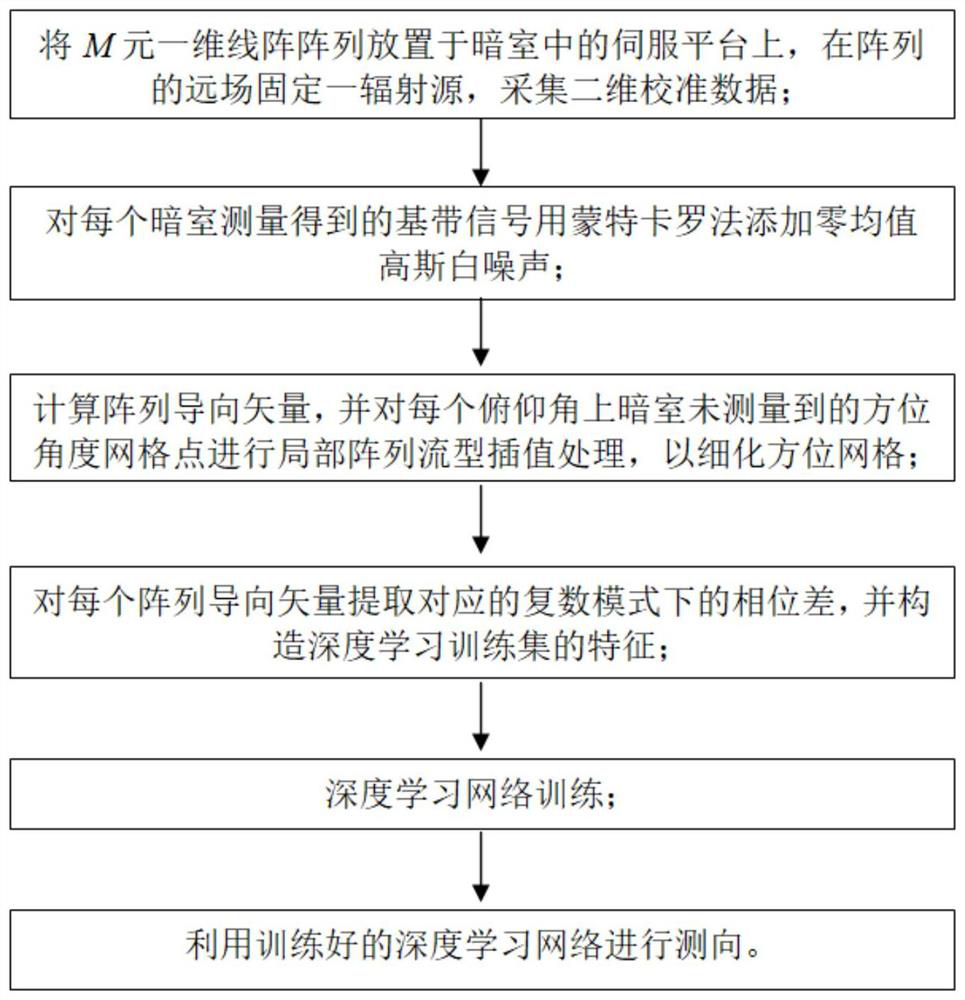One-dimensional linear array direction finding method under two-dimensional angle dependence error based on deep learning
A technology of deep learning and two-dimensional angle, which is applied in the field of array direction finding, can solve the problems of large amount of stored data, large residual array error of the calibration method, and high computational complexity, and achieve high direction finding accuracy, excellent performance, and residual array error small effect
- Summary
- Abstract
- Description
- Claims
- Application Information
AI Technical Summary
Problems solved by technology
Method used
Image
Examples
Embodiment 1
[0078]Step 1. Place the 8-element linear array with a radome in the microwave anechoic chamber, place a radiation source in the far field of the array, and set the test signal-to-noise ratio to 60dB. Scan the uniform azimuth angle grid within [-40°, 40°] at an interval of 0.5° at the depression angle [-3°, -2°,...,3°], and collect the array output baseband signal . The integer azimuth angle grid corresponding to all pitch angles, namely [-40°,-39°,...,40°], the measured data is used to construct the training data, and the decimal azimuth angle grid corresponding to all pitch angles, namely [- 39.5°,-38.5°,…,39.5°] for testing calibration performance.
PUM
 Login to View More
Login to View More Abstract
Description
Claims
Application Information
 Login to View More
Login to View More - R&D
- Intellectual Property
- Life Sciences
- Materials
- Tech Scout
- Unparalleled Data Quality
- Higher Quality Content
- 60% Fewer Hallucinations
Browse by: Latest US Patents, China's latest patents, Technical Efficacy Thesaurus, Application Domain, Technology Topic, Popular Technical Reports.
© 2025 PatSnap. All rights reserved.Legal|Privacy policy|Modern Slavery Act Transparency Statement|Sitemap|About US| Contact US: help@patsnap.com



